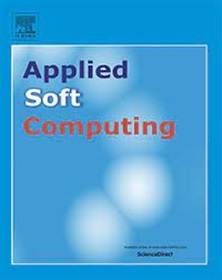基于颗粒粗糙集的三向决策
IF 6.6
1区 计算机科学
Q1 COMPUTER SCIENCE, ARTIFICIAL INTELLIGENCE
引用次数: 0
摘要
通过将颗粒计算与粗糙集理论相结合,颗粒粗糙集通过基于颗粒的表示增强了决策的语义和有效性。现有的研究并没有深入探讨用颗粒粗糙集诱导三方决策规则的问题,部分原因是有意义地描述颗粒的挑战。为了解决这些问题,本文提出了一种基于颗粒粗糙集的三向决策模型的统一框架。此外,我们还引入了一个用于颗粒描述的广义公式。它扩展了传统的表示,以包含给定域中所有可能的描述。通过提出的框架和颗粒描述,我们建立了广义颗粒粗糙集的三向决策模型,并进一步证明了其在商空间、邻域诱导颗粒空间和最大团诱导颗粒空间三种特定类型的实例化潜力。通过集值信息表的实例和真实数据集的实验,说明了所提模型的有效性。结果表明,所提模型具有良好的性能和实用性。本文章由计算机程序翻译,如有差异,请以英文原文为准。
Three-way decision with granular rough sets
By integrating granular computing with rough set theory, granular rough sets enhance the semantics and effectiveness of decision-making through granule-based representations. Existing research has not thoroughly explored the issues of inducing three-way decision rules with granular rough sets, partly due to the challenge of meaningfully describing granules. To address these gaps, this paper proposes a unified framework for three-way decision models based on granular rough sets. Additionally, we introduce a generalized formulation for granule descriptions. It extends traditional representations to include all possible descriptions within a given domain. Through the lens of the proposed framework and granular descriptions, we formulate a three-way decision model in generalized granular rough sets and further demonstrate its instantiation potential across three specific types of granular spaces: quotient spaces, neighborhood-induced granular spaces, and maximal-clique-induced granular spaces. The effectiveness of the proposed models is illustrated through examples using set-valued information tables and experiments on real-world datasets. The results show that the proposed models have good performance and practical applicability.
求助全文
通过发布文献求助,成功后即可免费获取论文全文。
去求助
来源期刊

Applied Soft Computing
工程技术-计算机:跨学科应用
CiteScore
15.80
自引率
6.90%
发文量
874
审稿时长
10.9 months
期刊介绍:
Applied Soft Computing is an international journal promoting an integrated view of soft computing to solve real life problems.The focus is to publish the highest quality research in application and convergence of the areas of Fuzzy Logic, Neural Networks, Evolutionary Computing, Rough Sets and other similar techniques to address real world complexities.
Applied Soft Computing is a rolling publication: articles are published as soon as the editor-in-chief has accepted them. Therefore, the web site will continuously be updated with new articles and the publication time will be short.
 求助内容:
求助内容: 应助结果提醒方式:
应助结果提醒方式:


